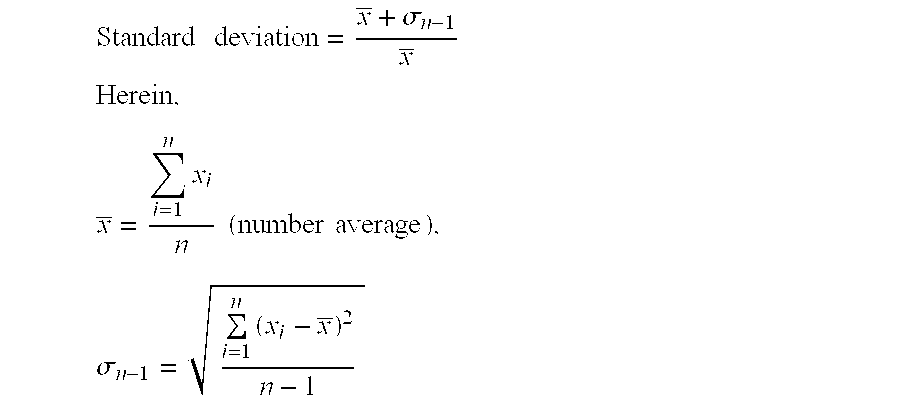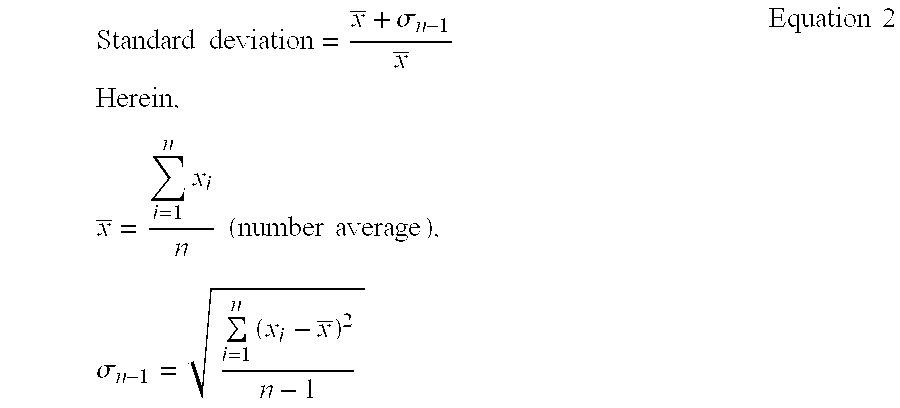Dental composite restorative material
a composite and restorative material technology, applied in the field of dental composite restorative materials, can solve the problems of inability to increase the filler-packing ratio, deficient mechanical strength, and shrinkage of polymerization, and achieve the effects of good curable composition transparency, no stickiness, and small shrinkage of polymerization during curing
- Summary
- Abstract
- Description
- Claims
- Application Information
AI Technical Summary
Benefits of technology
Problems solved by technology
Method used
Image
Examples
production example 1
Production of Organic Resin Matrices
[0118]Each of the polymerizable monomers as shown in Table-1 was mixed to prepare matrices M-1˜M-4 used in the Examples and Comparative Examples.
TABLE 1refractivename ofindex ofmatrixpolymerizable monomercured bodyM-1bis-GMA(30) / 3G1.528(70)M-2UDMA(70) / 3G(30)1.510M-3bis-GMA(60) / 3G1.546(40)M-4D-2.6E(75) / 3G1.553(25)
production example 2
Production of Silica-Based Particles
[0119]Silica-based particles used in the Examples and Comparative Examples were prepared by the method described below:
[0120]2-1) Production of Spherical Silica-Titania Particles Having an Average Primary Particle Diameter of 0.25 μm
170 g of tetraethylsilicate (manufactured by COLCOAT CO., LTD. under the product name Ethylsilicate 28) were mixed with 400 g of methanol to prepare a mixture, to which 5 g of 0.04% aqueous solution of hydrochloric acid were added, and hydrolyzed at a temperature of 30° C. while agitating for about one hour to prepare a solution (solution-1). Thereafter, a solution obtained by dissolving 27 g of tetrabutyl titanate and 10 g of sodium methylate methanol solution (concentration: 30% by weight) in 200 g of isopropyl alcohol was mixed with the solution-1 while agitating to prepare a mixed solution of tetraethylsilicate with tetrabutyl titanate. Next, 1000 g of methanol were introduced into a glass container equipped with a...
production example 3
Production of Organic-Inorganic Fillers
[0133]Each of the silica-base particles shown in Table 3 was weighed and put in a mortar, and was added gradually in a matrix in which AIBN had been previously dissolved as a polymerization initiator in a weight ratio of 0.5% shown in Table-3, and mixed together to prepare a paste. Each of the pastes was polymerized at a temperature of 95° C. in a nitrogen atmosphere for one hour to obtain a cured polymerized composition. The cured polymerized composition thus obtained was pulverized by using a roll crusher and then further pulverized for 30 minutes under such conditions that the cured polymerized composition was put in a 400 mL pot together with ten (10) zirconia balls having a diameter of 25 mm in a vibration ball mill (manufactured by CHUO KAKOKI CO., LTD., under the trade name New-Right Mill) to obtain organic-inorganic composite fillers. The organic-inorganic composite fillers thus obtained were subjected to surface-treatment with γ-methac...
PUM
| Property | Measurement | Unit |
|---|---|---|
| average particle diameter | aaaaa | aaaaa |
| particle diameter distribution | aaaaa | aaaaa |
| wavelength | aaaaa | aaaaa |
Abstract
Description
Claims
Application Information
 Login to View More
Login to View More - R&D
- Intellectual Property
- Life Sciences
- Materials
- Tech Scout
- Unparalleled Data Quality
- Higher Quality Content
- 60% Fewer Hallucinations
Browse by: Latest US Patents, China's latest patents, Technical Efficacy Thesaurus, Application Domain, Technology Topic, Popular Technical Reports.
© 2025 PatSnap. All rights reserved.Legal|Privacy policy|Modern Slavery Act Transparency Statement|Sitemap|About US| Contact US: help@patsnap.com



